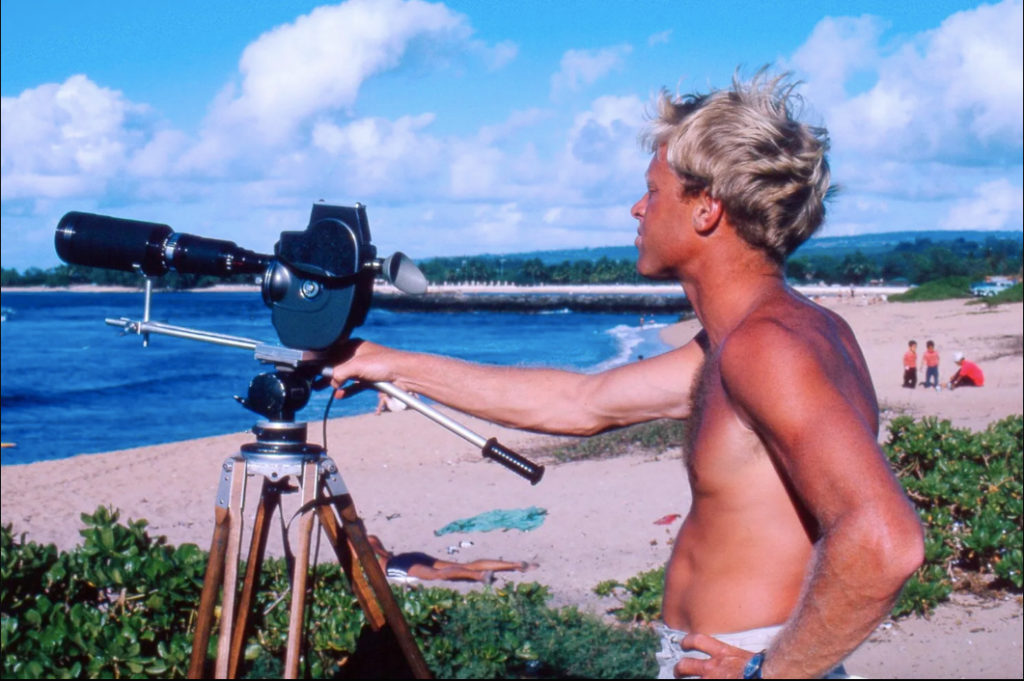
The Films of Bruce Brown
This season’s Stan Ray gear takes inspiration from the laid-back surf style of the 1960s, in particular the China Beach Surf Club—a club which was formed on Da Nang’s My Khe beach during the Vietnam War. With that in mind, we thought we’d pay homage to one of the early pioneers of the humble surf film—Bruce Brown…
Some things lend themselves particularly well to film—the streets of New York… high-speed car chases… the neon lights in rainy Tokyo. Surfing can probably be added to the list. The combination of blue skies, crashing waves and bold motion make for easy cinematic gold—and few harvested this visual gold better than Bruce Brown.

In the early 60s, a time when surfing was being crudely assimilated by the mainstream, Bruce’s 16mm camera captured not just the surfers in the water, but the dirtbag lifestyle they lived on dry land—the beat-up old cars they drove, and the remote beaches they slept on.
Whilst it’d be wrong to say Bruce invented the surf film—that accolade probably goes to an earlier filmmaker called Bud Browne (no relation, note the ‘e’)—it was Bruce who helped bridge the gap between actual surfers and the rest of the cinema-going public when his 1964 classic Endless Summer finally made it to the big screen.

Like the effortless wave carving he documented, Bruce’s trajectory from California surfer to acclaimed filmmaker seemed deceptively simple. He first photographed surfing so his mum could understand what he did all day, and by the early 60s he’d made a string of self-funded full-length documentaries which he’d tour around the country, such as Slippery When Wet and Waterlogged.
By 1963, with surfing bigger than ever, Bruce was convinced that a well-made honest surf film could also appeal to the masses, and in the midst of the surf-craze, show them what it was really about. Endless Summer was the result.
His most elaborate production (even if the ‘crew’ did just consist of Bruce and his Bolex camera) the film was originally meant to document a trip to South Africa with surfers Mike Hinson and Robert August, but when they realised it was cheaper to buy round-the-world tickets, a full world tour was concocted, chasing the sun across the globe, taking in untapped beaches from Nigeria to New Zealand.
In contrast with fresh-faced teens of the ‘beach party’ films endlessly released throughout the decade, the surfers depicted in The Endless Summer lived a raw existence more in line with The Dharma Bums than Gidget—trekking down dusty desert tracks in old trucks and sharing waves with fishing boats.
The film originally toured around the States as a silent picture—with Brown narrating the action night after night—before it was finally picked up by a distributor in 1966. Emerging at the same time as America’s bold new wave of cinema (less studio fan-fare, more real life), The Endless Summer was a surprise hit—inspiring those who didn’t surf to grab a board, and those who did surf, to hitch a ride further afield in search of the perfect wave.
Five years later, Bruce turned his lens on another one of his passions, motorbike racing, with On Any Sunday—once again inspiring a generation in the process. Whilst the film itself, narrated by Steve McQueen, helped show the characters and community around motorcycles, the infamous opening sequence—featuring a gang of kids racing old cruiser bikes on a dusty track—was perhaps even more influential, and helped to popularise the new phenomenon of BMX riding far beyond California.

Bruce passed away in 2017, but his legacy lives on in surfing and beyond. Everything from Thomas Campbell’s hazy 16mm films like Sprout and Seedling, to the anything-goes DIY nature of the Runman films can be traced back to the films made by Bruce Brown. And what’s more, his influence rippled beyond the beach—and it’s not too much of an overstatement to say that the worlds of skate, BMX and snowboarding films also owe a lot to the format that Bruce pioneered, still echoing his half-documentary, half-music-video style even now (albeit without the slightly dated narration).
Maybe the universal appeal of his films lay somewhere in their simplicity. As he said in one of his last interviews, “I just wanted to take pictures of me and my buddies surfing, just to show people.” And when the sun is shining and the waves are good, what more do you need?